Three Sasaki Projects Win BSA Awards
Monterrey Tec's new library, Las Salinas master plan, and West Java University master plan all win 2019 honors from the Boston Society of Architects
 Sasaki
Sasaki
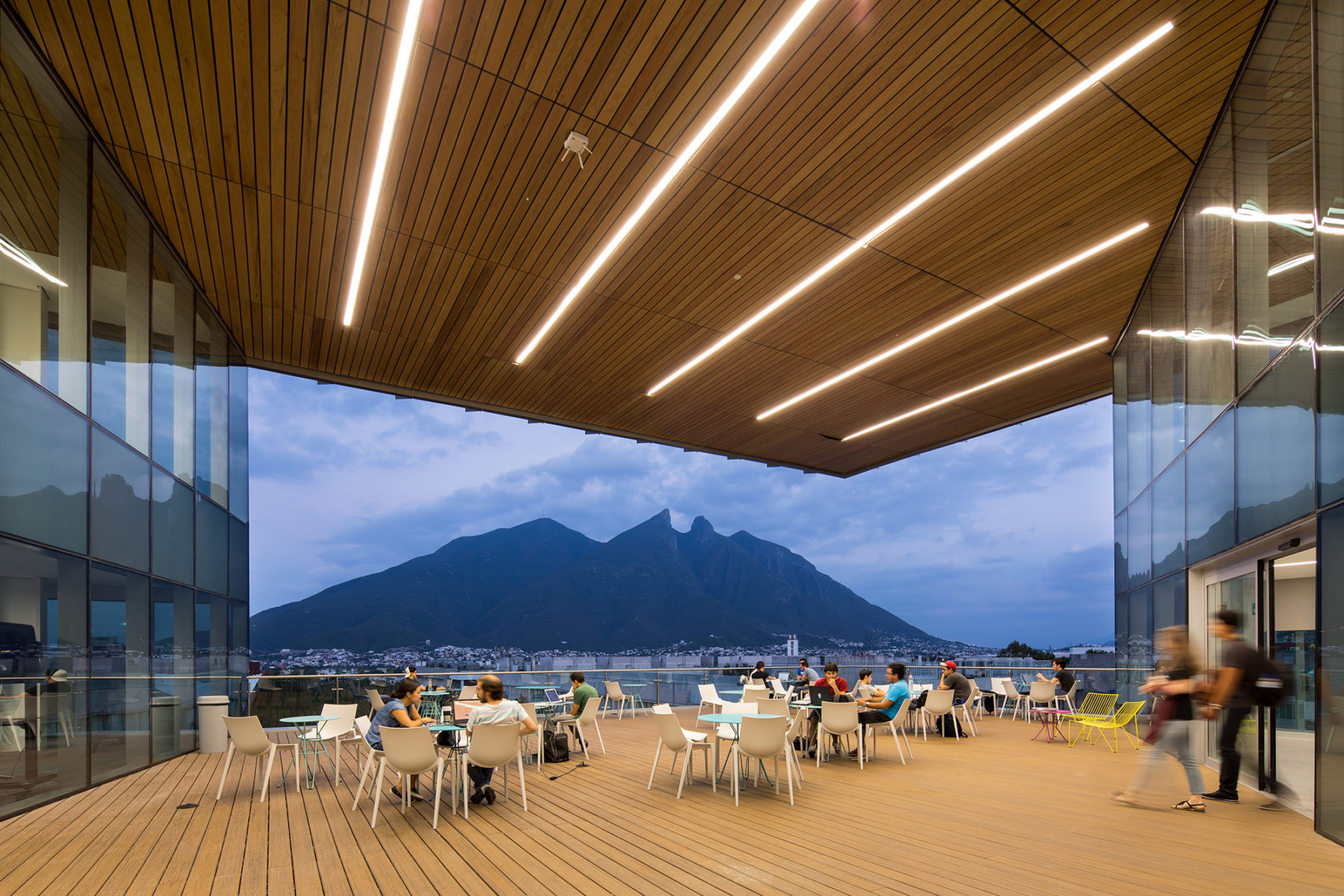
One of the library’s more stunning design flourishes is an open terrace with a café on its upper floors that overlooks the city of Monterrey and the Sierra Madre mountain range
Sasaki initially worked with Tecnológico de Monterrey, a leading university in Monterrey, Mexico, to transform their original 1969 library building into a more relevant and collaborative academic hub. During the course of the study, it was discovered that the building was in need of significant seismic upgrades that would be cost prohibitive and would severely limit program development. The University then asked the team to collaborate with them to design a building that will become the leading academic library in Mexico.
The new library, situated on the site of the previous library at the center of the historic campus precinct, needed to accommodate a much larger building program in the same footprint as the old building. This location would help preserve the historic landscapes of the Jardin de las Carreras and the University’s Founders Memorial Plaza, which bookend the library site to the East and West.
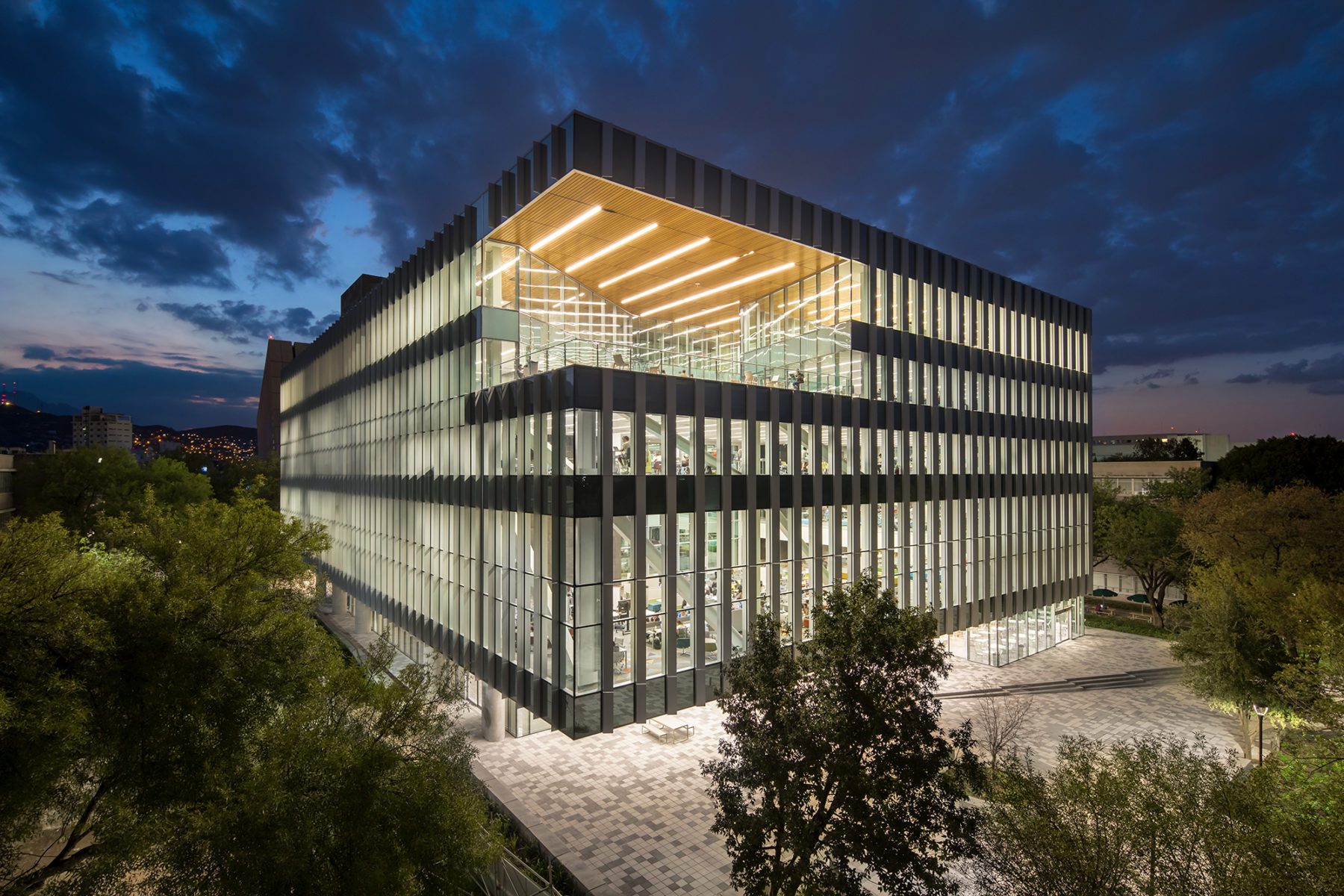
View of Library from Jardin de Las Carreras
Programmatically, the building had to house 150,000 existing book volumes, combine two special collections libraries, including the notable Cervantina collection, create new teaching laboratories, and provide much needed study space for individuals and groups in the form of a learning commons, collaborative study space, reading rooms, and individual study and research spaces. Other programs included student life spaces, food and beverage outlets, a makerspace, and the University bookstore.
The transparent new building structure sits at the heart of the campus like a treehouse in the middle of the campus forest. Channeling two major pedestrian arteries of the campus, the building is lifted from the ground, creating a large shaded plaza for the campus. The plaza is activated by the student life-related programs located in the spaces that touch down on the ground level.
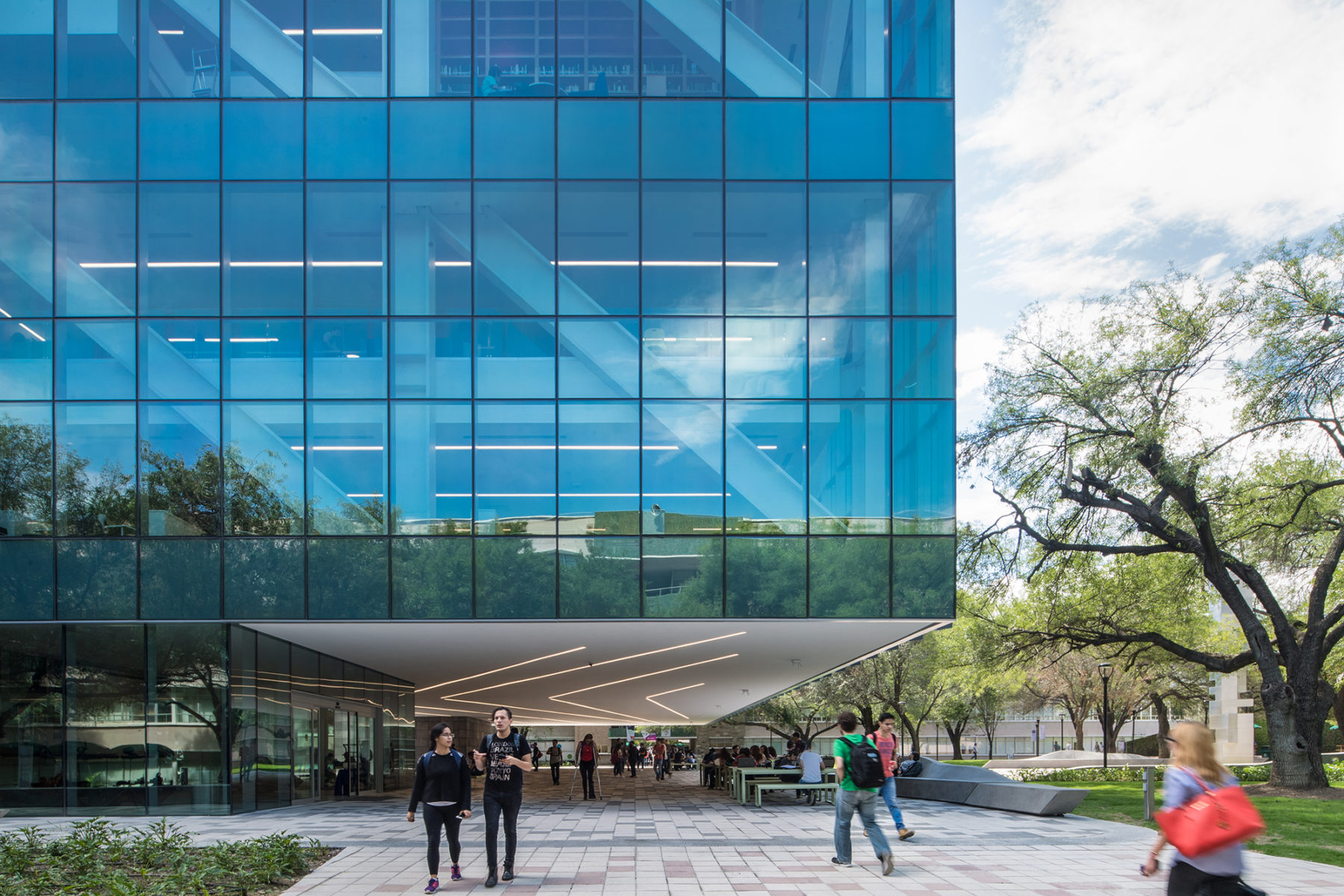
View of covered entry plaza into library
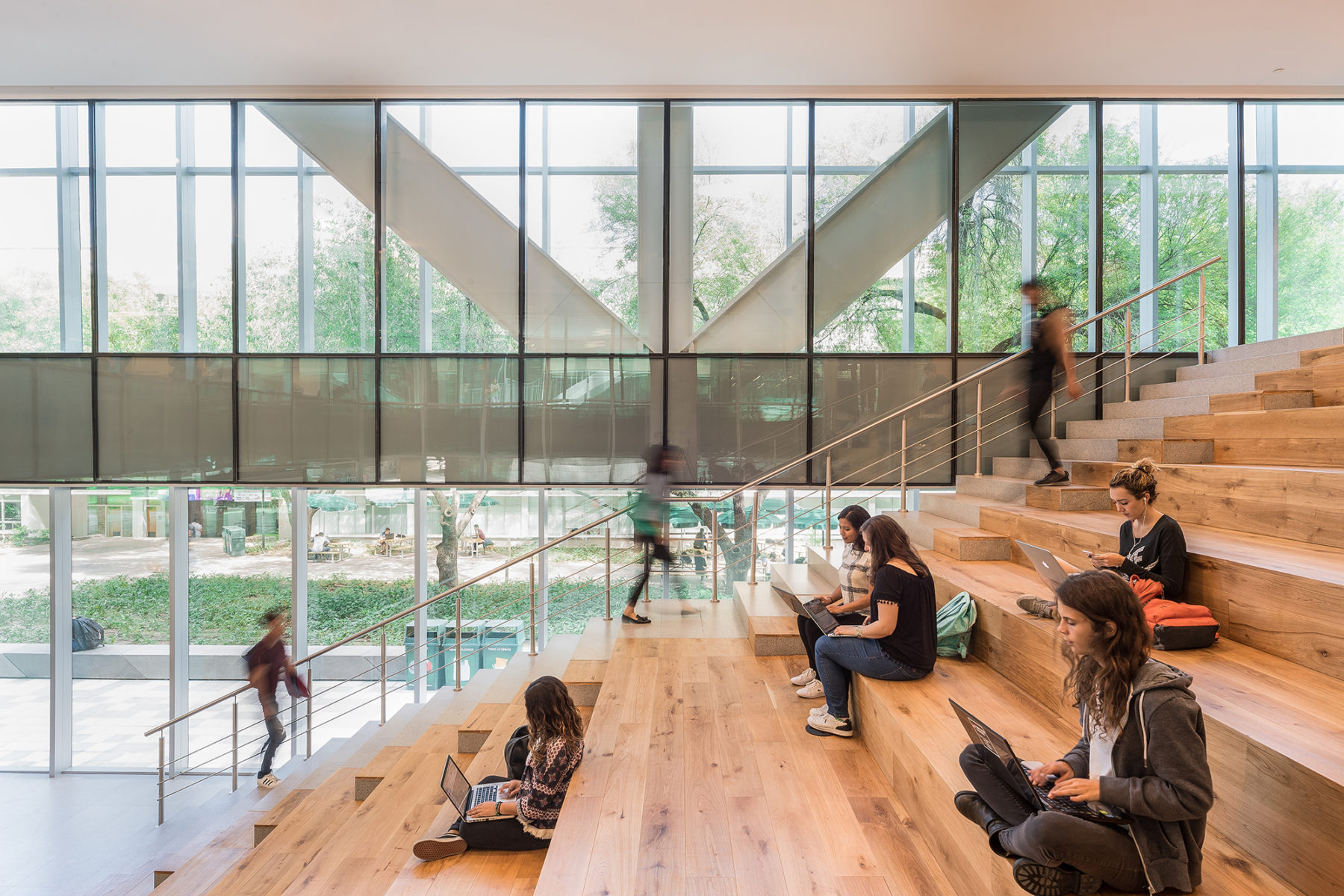
The 183,000-square-foot library on Tecnológico de Monterrey’s main campus is a hive for campus activities, and is designed to encourage idea exchange and interaction
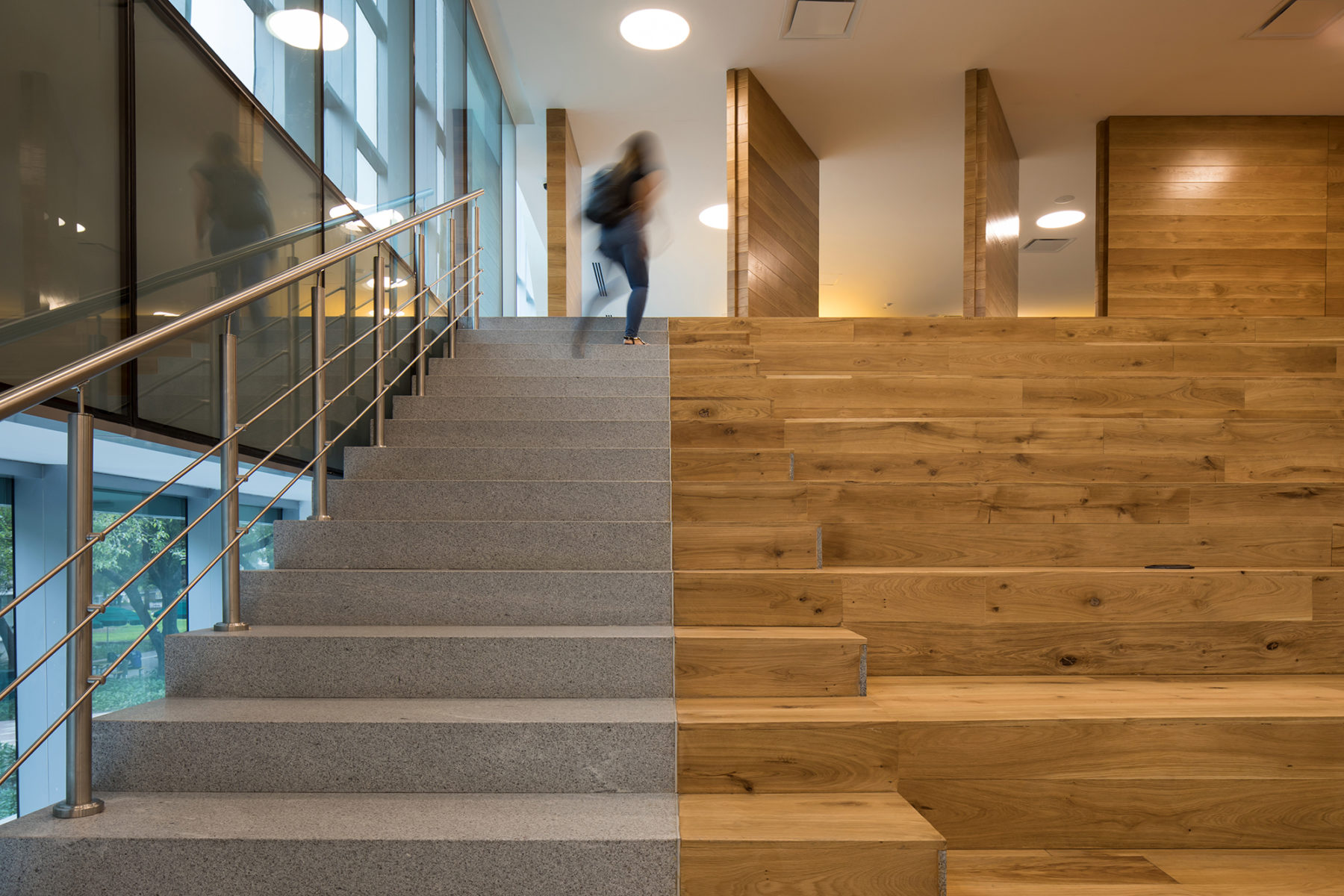
View looking up amphitheater space
In contrast with the introverted old library, the building turns itself inside out, making its programs visible and accessible from the outside. Its circulation originates at the covered plaza, and reaches into the library via stairs and escalators lining the outdoor courtyard at the building’s center. Movement throughout the library is fluid, unfolding both inside and outside the building; multiple routes allow visitors to meander and discover its programs and spaces.
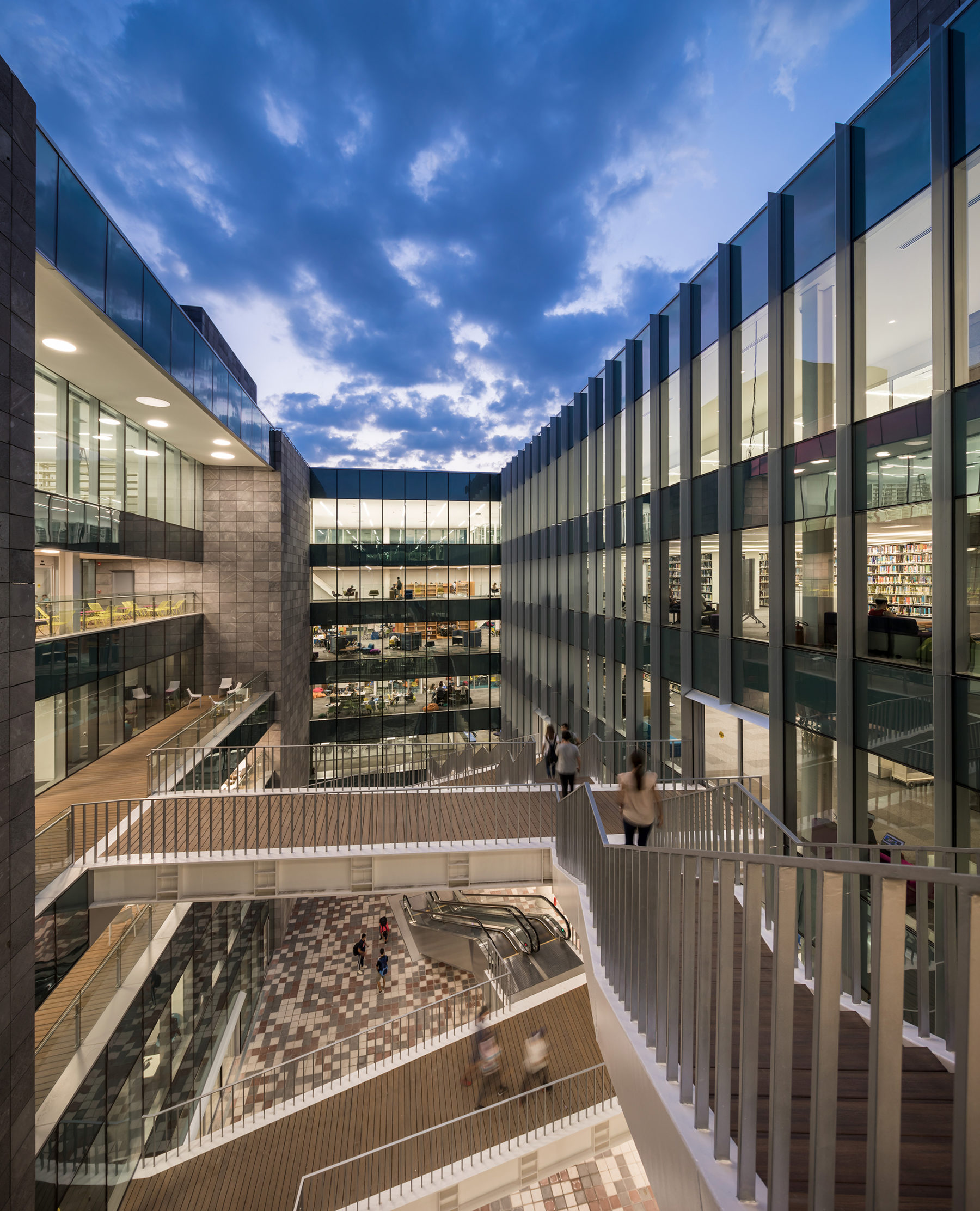
View of building circulation through central courtyard
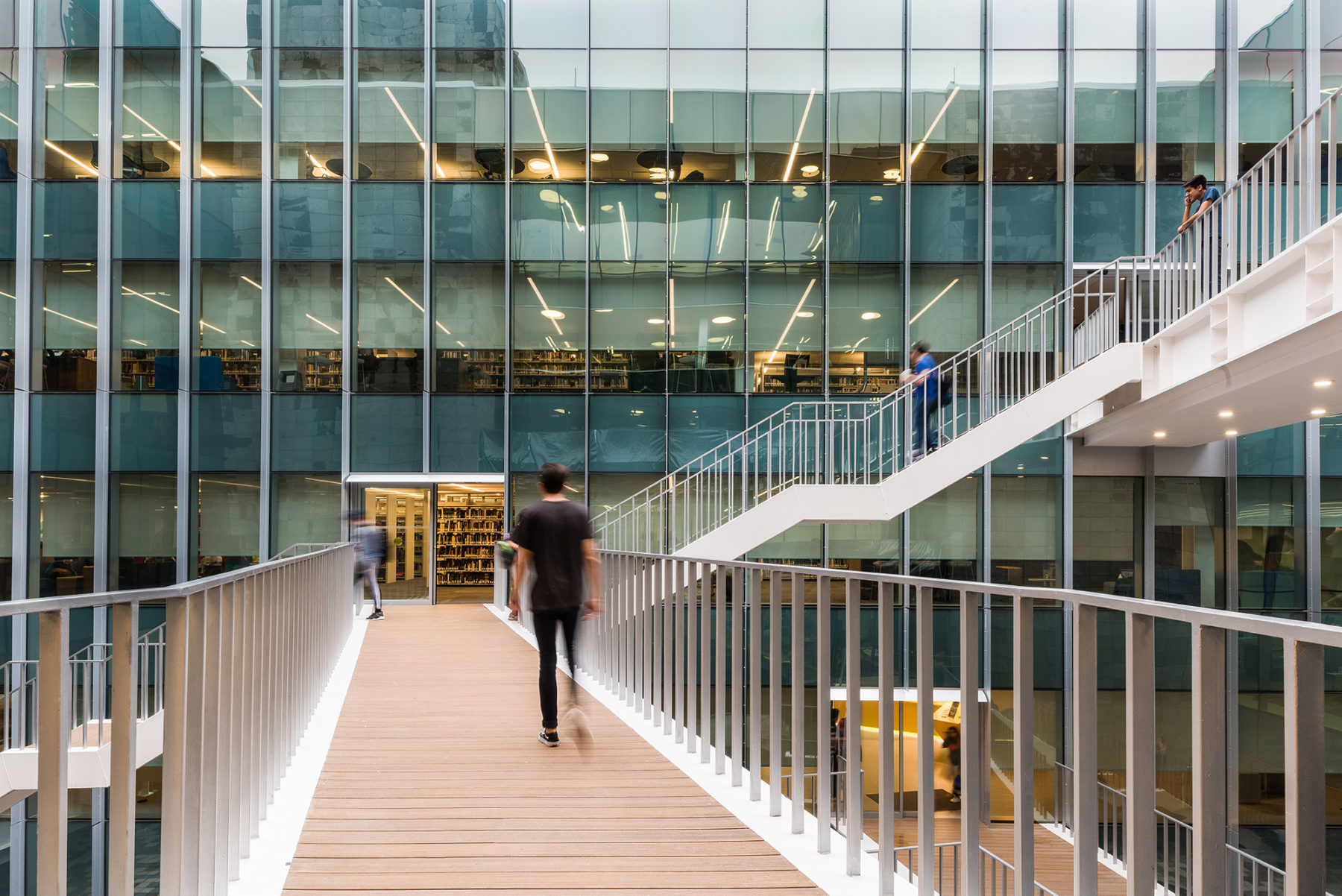
View of building circulation through connecting program spaces
To facilitate flexibility over time, the design features an open floor plan layout; floor-high belt trusses support the building’s floor plates, freeing spaces of columns at critical areas, and tying together the vertical cores and façade perimeter. Cantilevers reaching 60 feet in length help suspend the building over the covered plaza. Double-height spaces with alternating mezzanines create diagonal views across the interior courtyard, displaying people and activities at every level.
One of the large collaborative spaces is populated by “book boxes”—quiet study and meeting rooms lined inside and out by books. Terraces above the boxes serve as lounges for meeting and relaxation. The discovery sequence around the library culminates at its sky terrace facing the Jardin de Las Carreras. This space provides a unique vista of the campus forest, the city and Monterrey’s most iconic background: the Cerro de la Silla mountain.
This project received LEED Gold certification in 2018.
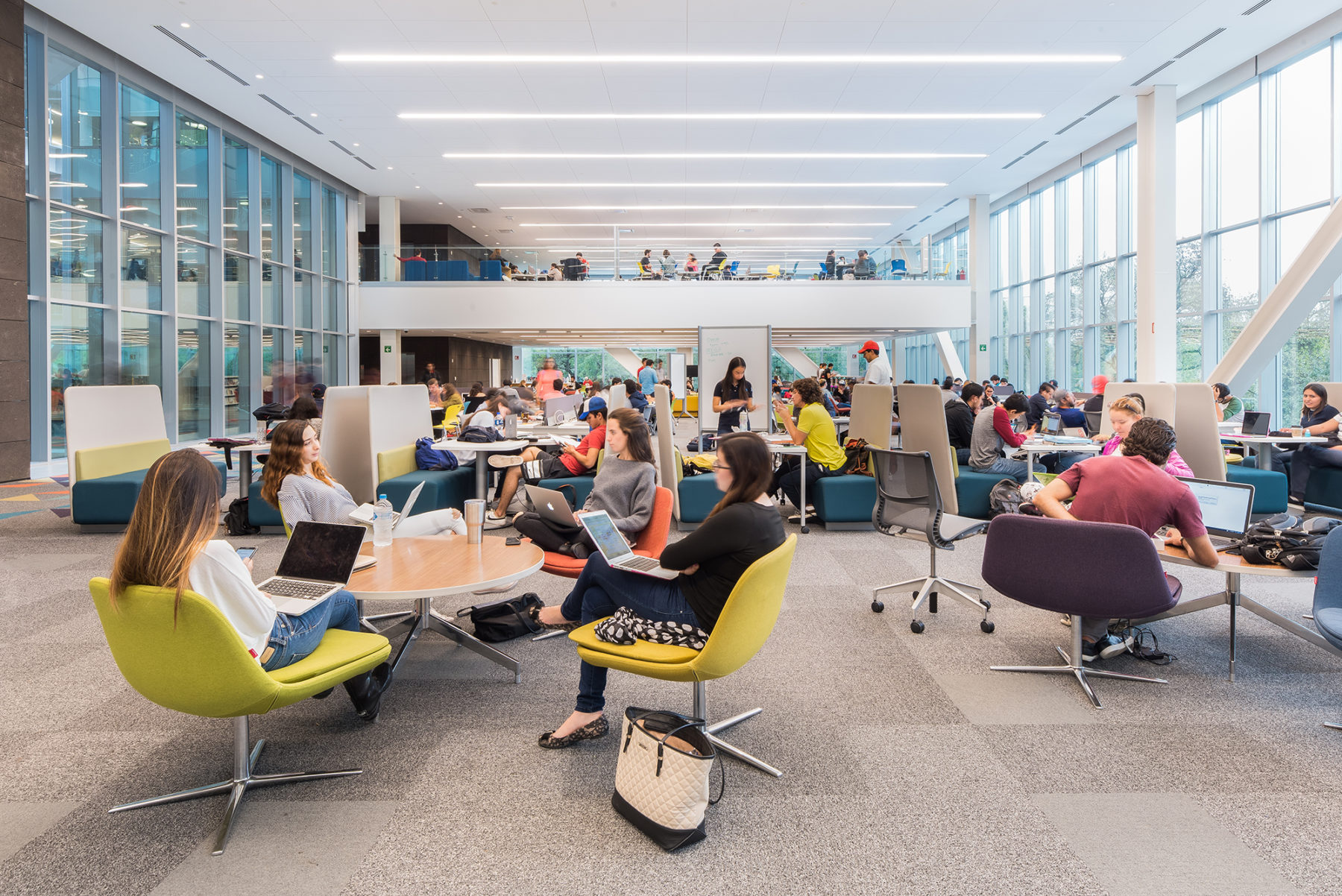
View of Learning Commons and Reading Room Mezzanine
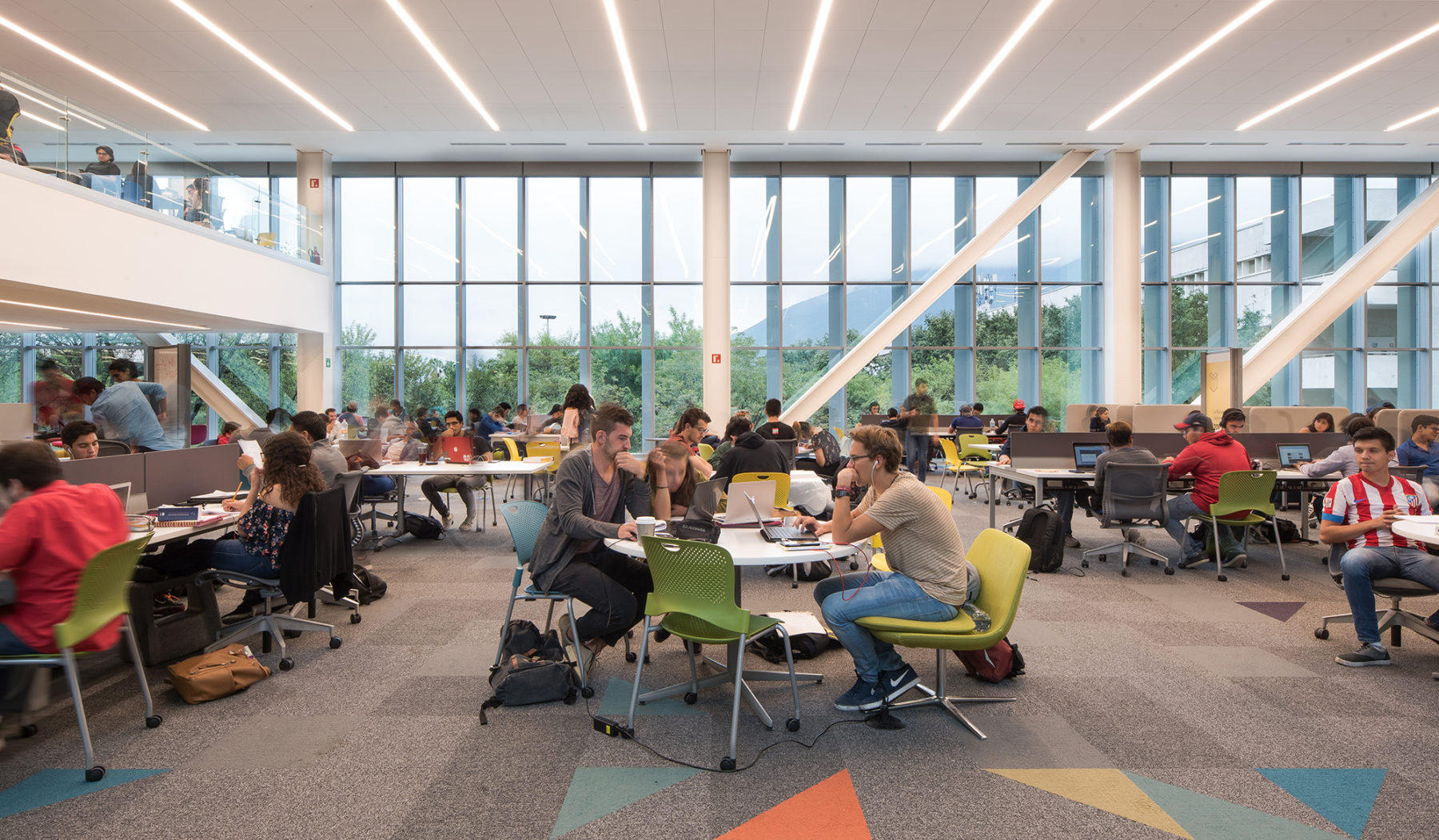
View of Learning Commons towards Jardin de Las Carreras
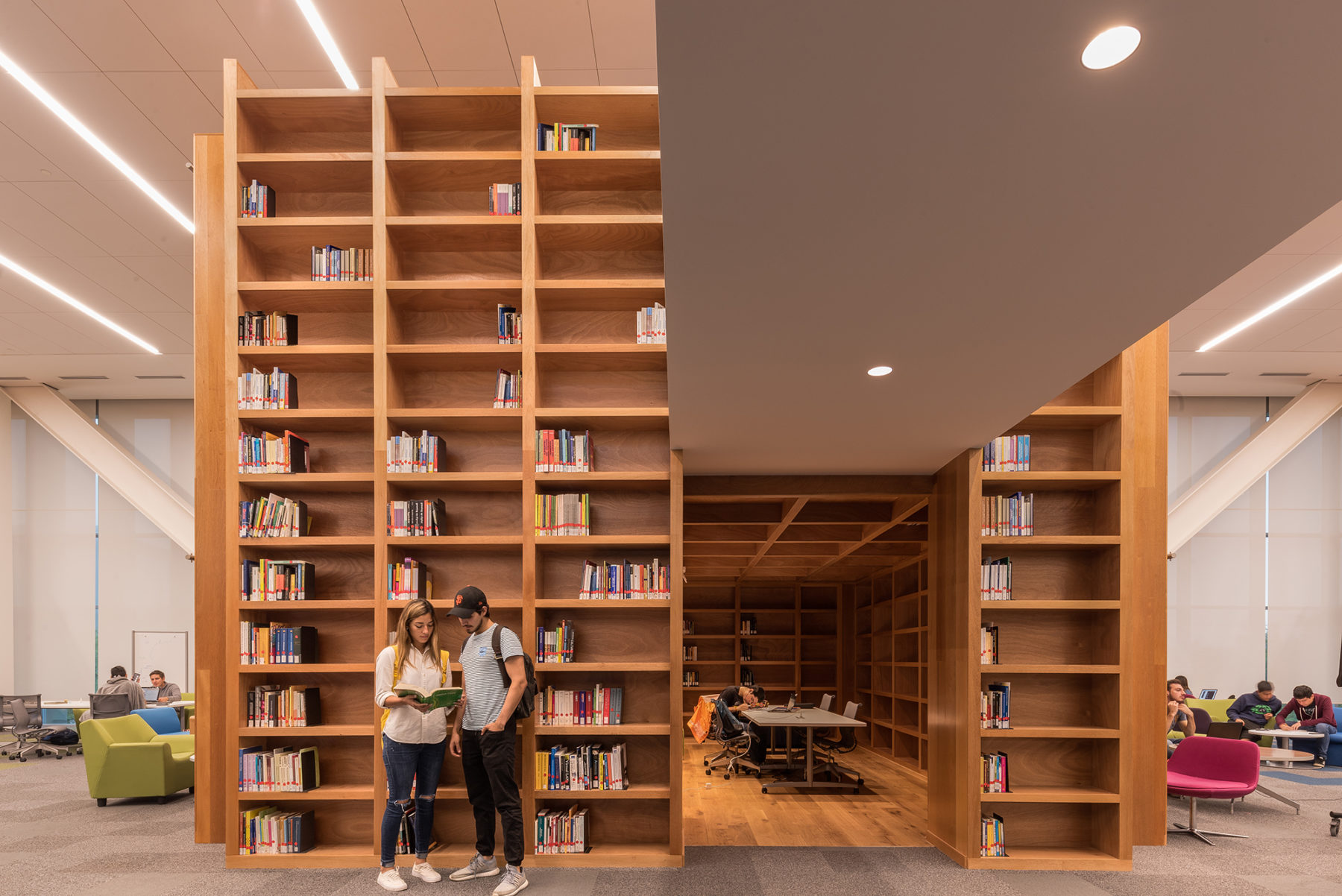
View of “Book Box” exterior
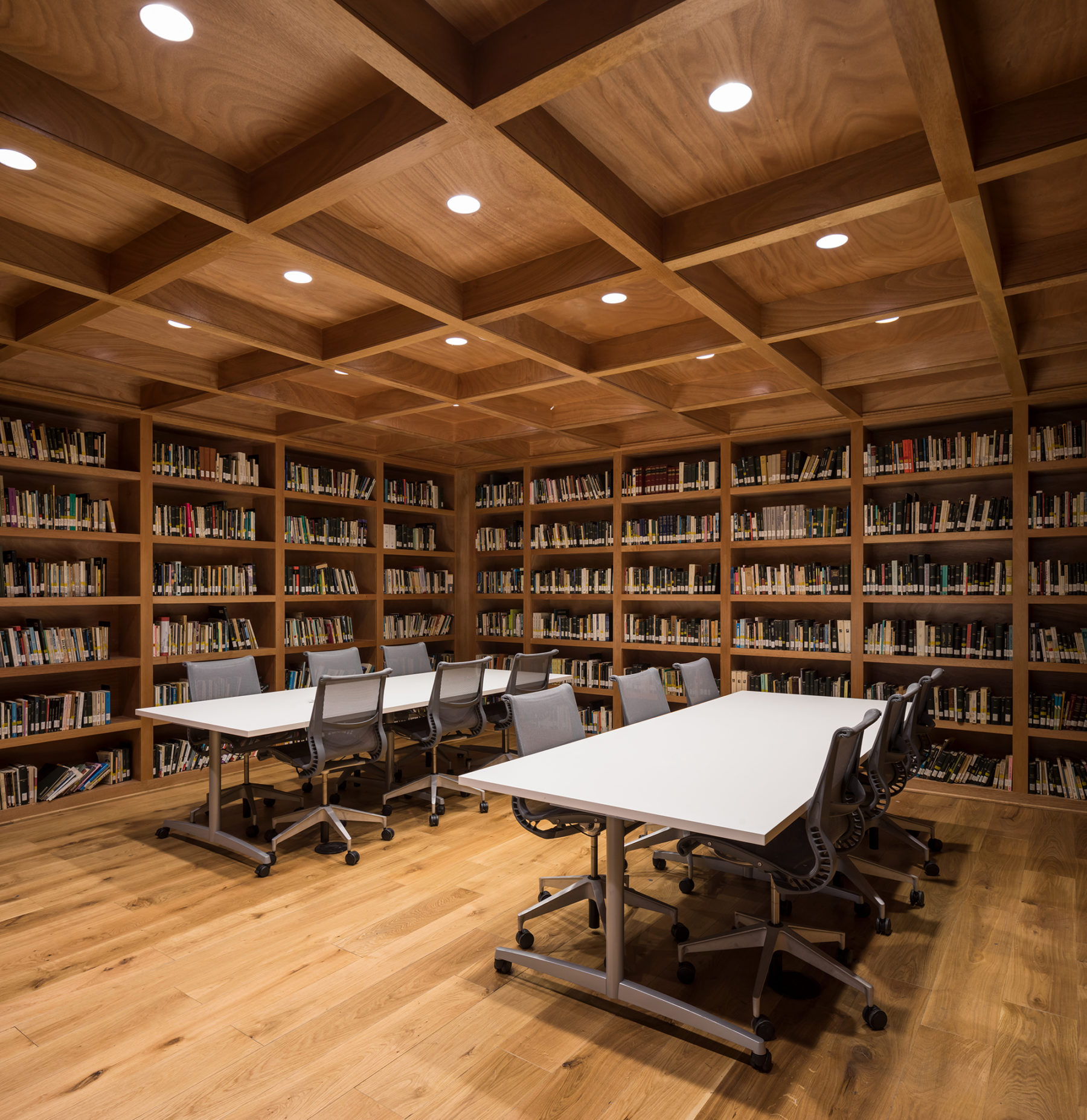
View of “Book Box” interior
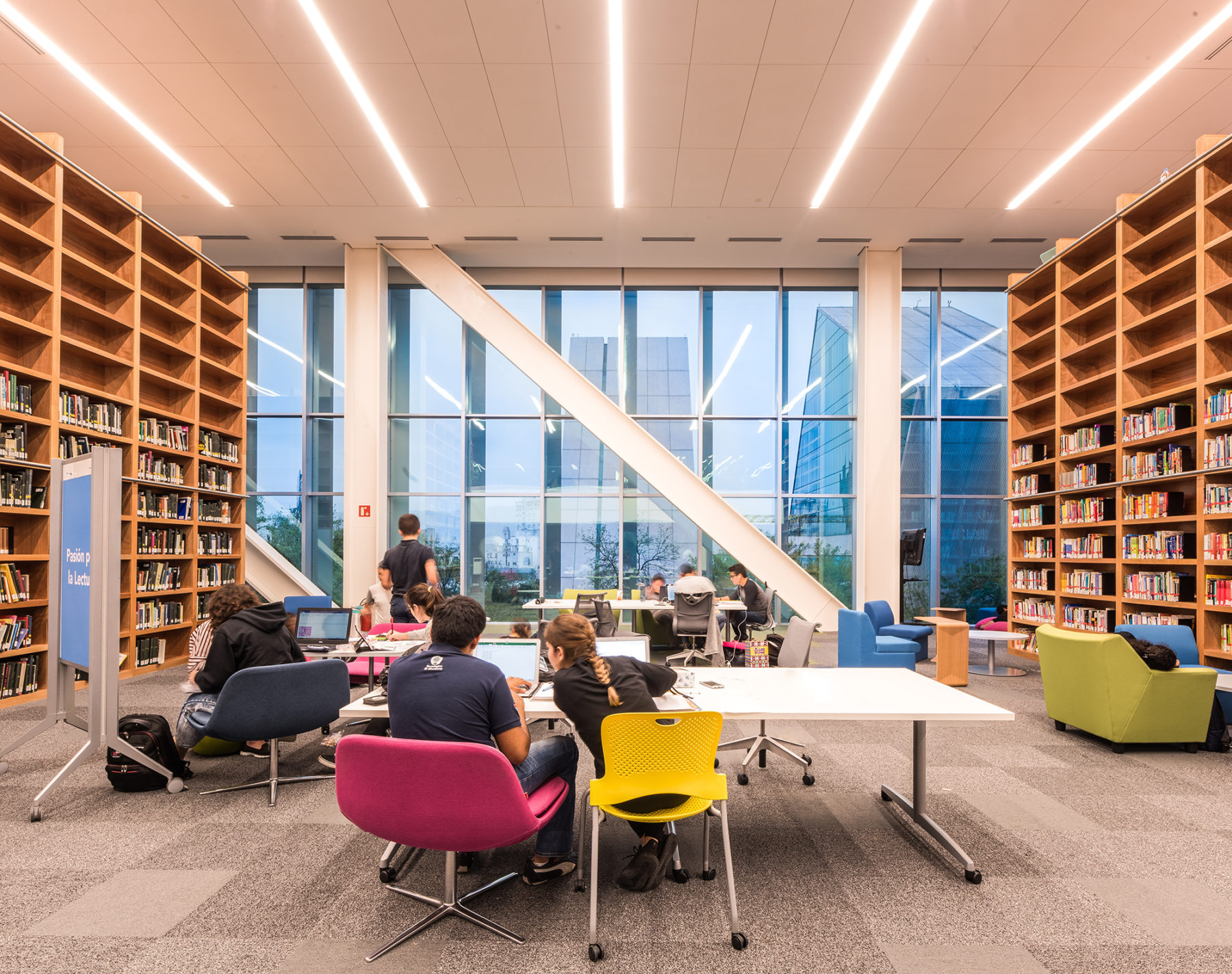
View of Collaborative Open Space
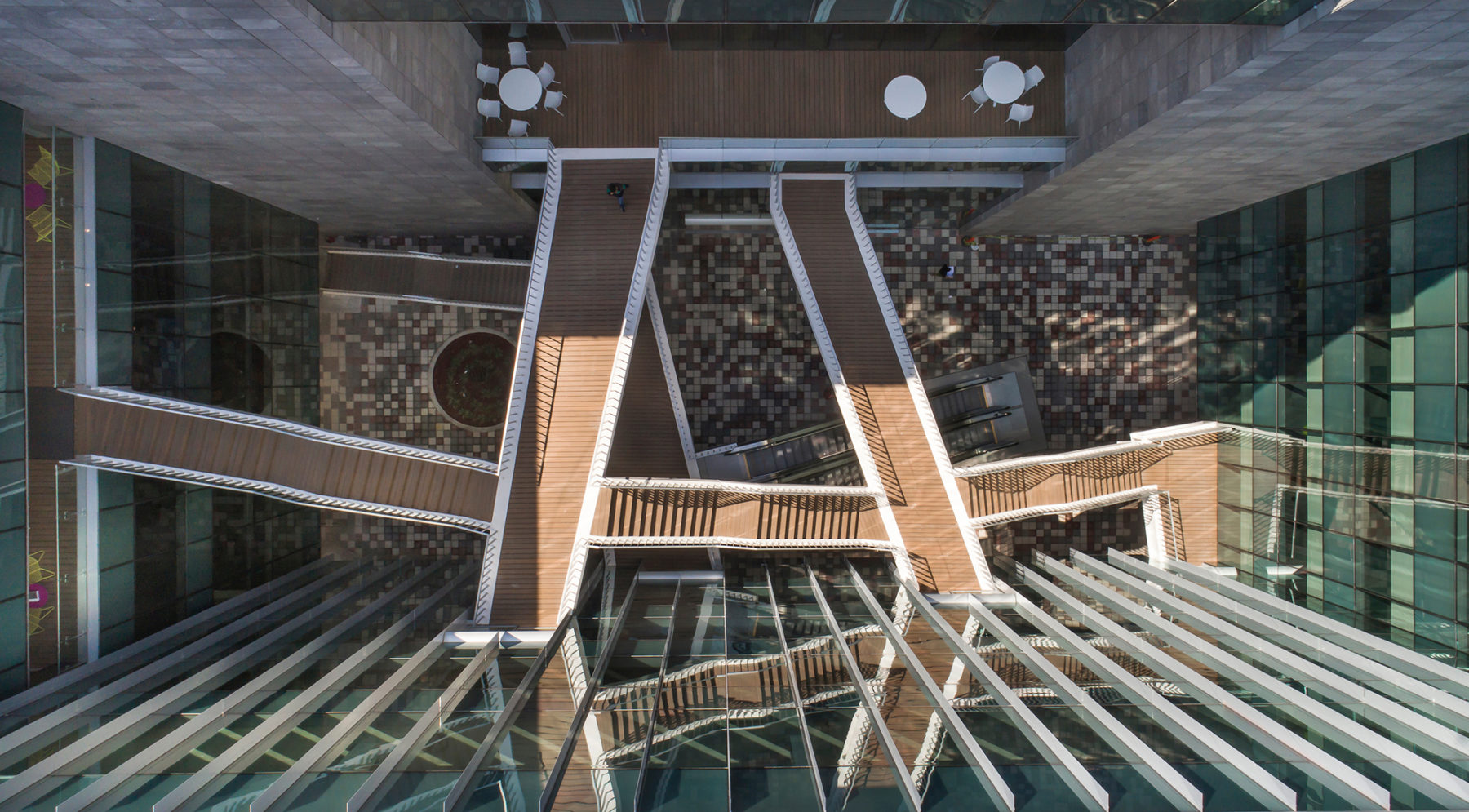
View showing multiple circulation routes connecting program spaces
View of Learning Commons towards Jardin de Las Carreras
View of “Book Box” exterior
View of “Book Box” interior
View of Collaborative Open Space
View showing multiple circulation routes connecting program spaces
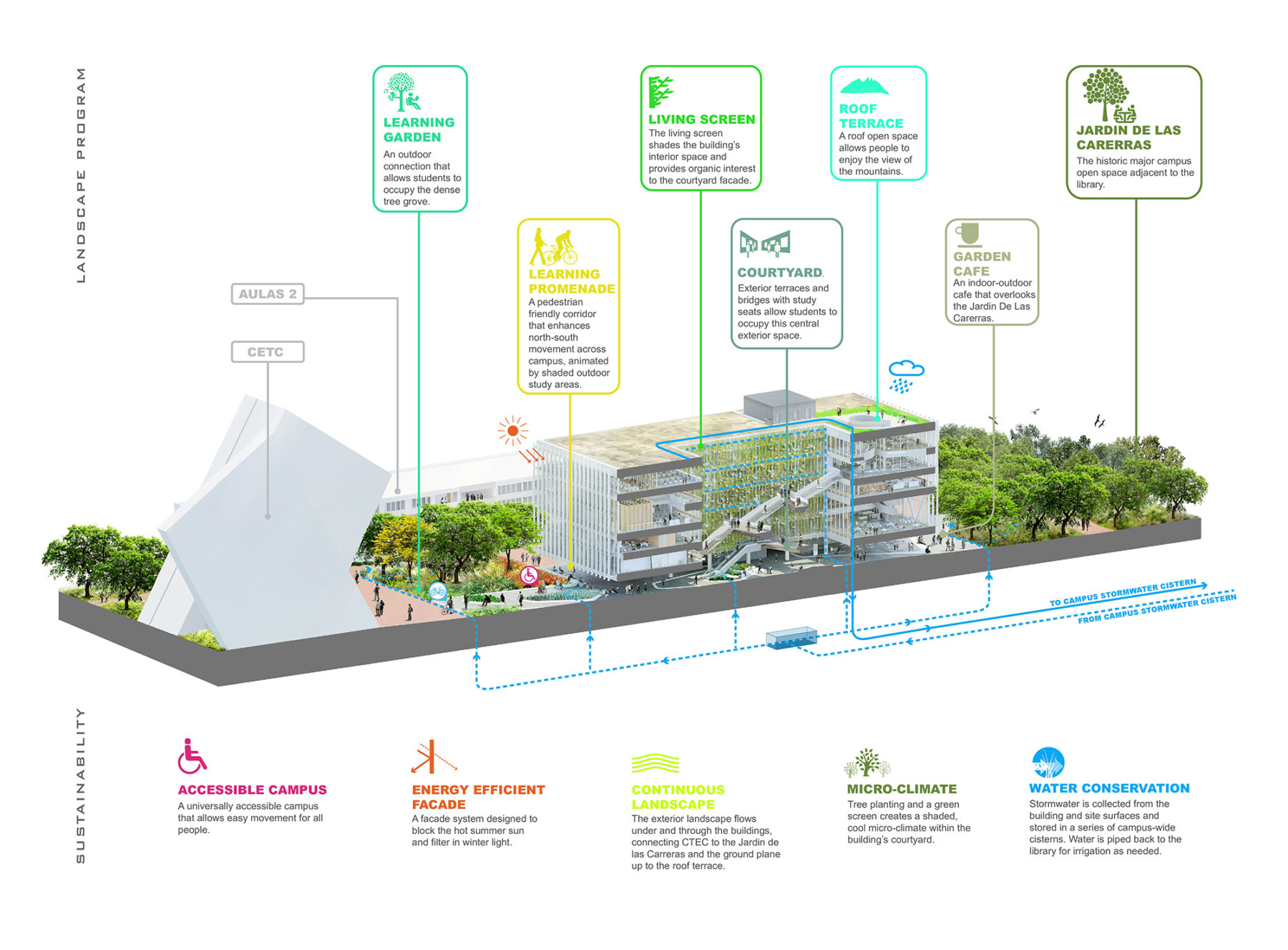
Landscape program and sustainable site and building strategies
For more information contact Pablo Savid-Buteler.
Monterrey Tec's new library, Las Salinas master plan, and West Java University master plan all win 2019 honors from the Boston Society of Architects
The American Library Association (ALA) and the International Interior Design Association (IIDA) honored the New Main Library at Tecnológico de Monterrey, MX, as the winner of the 2018 ALA/IIDA Library Interior Design Award for an Academic Library